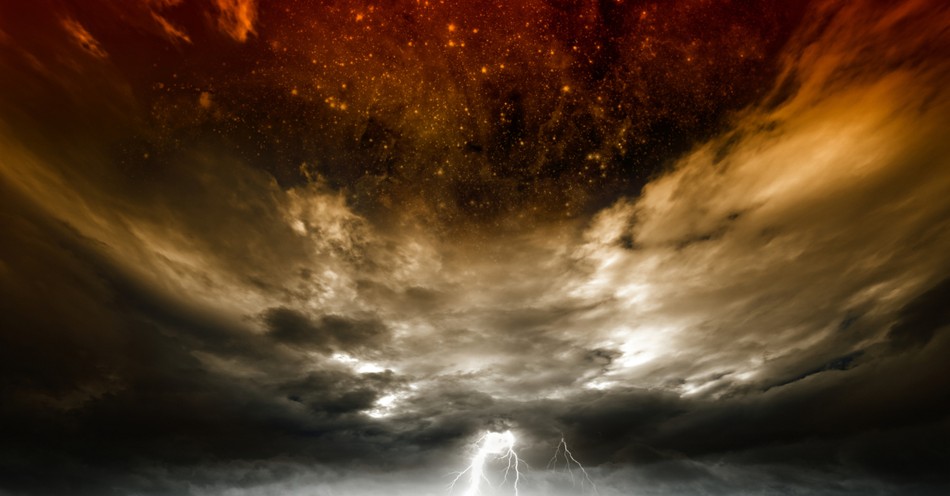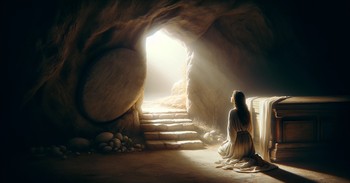The Book of Revelation describes a vision God gave John regarding the End Times. As punishment for mankind's sins, God will pour out His wrath during the seven-year tribulation period, during which humanity will be called to repentance and worship Him.
This judgment is largely composed of three series of sevens: the seven seals, the seven trumpets, and the seven bowls. God's wrath is described in Revelation 16:1-21 through seven bowls (or vials).
John sees seven angels bringing seven plagues, which are the last, because, with them, God's wrath has been concluded (Revelation 15:1). In response to God's command, seven angels release seven bowls of wrath on the earth.
Those who bore the mark of the beast and worshipped its image suffered painful sores, according to Bowl 1 (Revelation 16:2). Those following God are completely immune to the effects of the first bowl, but those following the Antichrist are.
What Are the Seven Bowls of Wrath?
In our examination of the bowls, we should note that each one represents the destruction of something God made in Genesis 1-2 for life and joy of His image-bearers. It is noteworthy that they correspond to one of the 10 plagues of the Exodus on Egypt.
Despite Egypt's catastrophe, God is capable of bringing such terrible plagues upon sinful humanity again, for he has already made it happen before. Now, it can happen globally.
1. The Loathsome Sores
Bowl number one declares that those who worshiped the image and bore the mark of the beast had painful and harmful sores (Revelation 16:2). People who prefer to follow God are not littered with the primary bowl, but only those who prefer to follow the Antichrist.
In this passage, God's fury is poured on humanity, which was created on the sixth day of Genesis 1. According to Revelation 13:18, this represents the sixth Egyptian plague of boils that falls on those who take the 666 mark of the beast, those who worship the creature above the Creator.
2. The Seas of Blood
In Revelation 16:3, bowl number two is poured out on the sea, turning the water "into blood like a dead person's blood, and all that was alive died." The sea had already lost a third of its life with the sounding of the second trumpet (Revelation 8:9) and now the rest is gone. There is no life in the oceans.
Throughout the ocean, God's fury is vented. In Genesis, God separated the waters above and below on the second day of creation in order to provide humanity with breathing space. The ocean also provides us with climate control, transportation, and a wonderful place to wander.
Fish were a marvelous source of food when God created the waters on the fifth day. The second bowl of God's creation destroyed the ocean's blessing. As in the sixth plague, God "killed" Egypt's waters, and they became a source of death for all Egyptians.
3. The River of Blood
In bowl number three, the rivers and springs of water became blood (Revelation 16:4). It is the third container that transforms all freshwater into blood. In God's judgment, the angel declares that the wicked people of the earth have shed the blood of believers and they will now drink this blood.
The third bowl is similar to how all of Egypt's waterways turned to blood due to the first plague. The Nile was used to murder those innocent babies, and now God is causing Egypt to see and taste their blood as if to punish Egypt for tossing the boys into the Nile.
4. The Scorching Sun
In the fourth bowl, the solar scorches humans with its fire while they curse God, nonetheless, they don't repent and give God glory (Revelation 16:8). Only a small fraction of the humans who curse God repent and give God glory throughout the fourth bowl.
The fury of God is shown here as it is poured out on the sun, which was created with the moon on the fourth day, "The greater light to rule the day and the lesser light to rule the night and the stars" (Gen. 1:16). As a tool of death, the sun has become an instrument of light and life.
5. Darkness
With bowl number five, the throne of the beast and its state has become enveloped by darkness (Revelation 16:10). The fifth bowl covers the Antichrist's state in darkness. Despite the darkness, humans continue to curse God and do not turn from their sins.
Darkness engulfs the wicked here, instead of scorching them to death with the sun. As in the penultimate plague upon Egypt, there was a three-day period of darkness across the entire land of Egypt. For three days, neither of them sees one another nor rise from their places (Exodus 10:21-23).
Hell is described by Jesus as "the outer darkness," referring to people thrown there. Those who are there will weep and gnash their teeth (Matthew 25:30).
6. War
In bowl number six, the great river, Euphrates, becomes dried up, preparing the way for the kings from the east (Revelation 16:12). In the sixth bowl, the Euphrates River is dried up, making it easier for the devil, the Antichrist, and the fake prophet to deceive the ultimate leaders of the arena and prepare for the final battle against Jesus, called Armageddon.
7. God’s Fury
Bowl number seven looks into the air, and from the throne, a loud voice cries, "It's completed!” (Revelation 16:17). The seventh bowl signifies the end of the judgments on the arena. The earth may experience a super earthquake.
Jerusalem will split into three components and the international cities will collapse. Mountain ranges will disappear, and humans will be hit by huge, hundred-pound hailstones.
In this bowl, there are interesting parallels with the moment of Jesus' death at the cross. Jesus says, "It is finished" (John 19:30), and the earth shakes, and the veil is torn in two (Matthew 27:51).
The angel with one of the bowls tells John about the judgment of the latest Babylon (Revelation 17-18). The people of the earth mourn Babylon's destruction, however, the human beings in heaven rejoice that God "has given judgment for you in opposition to her" (Revelation 18:20) for "all of the countries have been deceived by sorcery. And it changed into discovering the blood of prophets and of saints, and of all who have been slain on the earth" (Revelation 18:23–24).
John is shown the destiny of Babylon following the last bowl poured, then he sees "a white horse." The one on it is said to be trustworthy, and he judges and fights with righteousness (Revelation 19:11). This signifies Jesus. Jesus is coming on a white horse to defeat the devil once and for all and to establish His kingdom on earth.
What Do the Seven Bowls Mean?
As a result of humanity's sin and rebellion, God pours out seven bowls of fire on humanity in Revelation 16. It is these seven bowls that will be a reminder of Jesus Christ, the only one who can and will protect during the time described in Revelation.
For further reading:
What Is the Timeline of Revelation?
Are Wars and Rumors of War Tied to the End Times?
What Does the Bible Say about the End of the World?
What Are Signs of the End Times and the Rapture?
Photo Credit: ©iStock/Getty Images Plus/Ig0rZh
Glory Dy has been a content creator for more than 10 years. She lives in a quiet suburb with her family and four cats.



